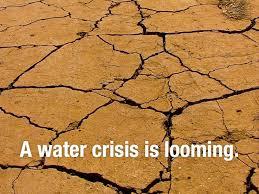
Utah had one of the driest winters on record during the 2014-2015 Season. While sunny days and mild weather were welcomed by many, scientists worried about Utah's water levels.
With the growing season just staring, many places in Utah are beginning to impose water restrictions, though mostly in central and southern Utah. Northern Utah, however, will most likely not see any mandatory water restrictions.
The Brigham City Council has passed measures to give its Public Works the authority to impose water restrictions if they ever become necessary. This ranges from the least restrictive, which is setting specific times for watering lawns, to prohibiting outside watering in the most extreme cases.
Brigham City's Public Works Director, Tyler Pugsley, said water restrictions would likely only be mandated during a major disaster or earthquake. "There hasn't ever been any restrictions imposed during my tenure," Pugsley said. He assured that Brigham City wouldn't put citizens under water restrictions this year either. Pugsley explained that Brigham City has its own spring and well sources to ensure adequate water for its residents. In fact, Brigham City has enough resources to help surrounding areas in the case of an extreme water shortage.
Perry City doesn't have its own water sources, instead relying on Pine View Water Systems to provide water to the majority of its residents. Because of this, any water restrictions are mandated by Pine View.
Although Perry also doesn't foresee any water restrictions being imposed this year, Public Works Director Paul Nelson said the City is asking residents to voluntarily restrict water.
"One of the biggest things we see is lots of overwatering," Nelson said. "People have automatic sprinkler systems, set them to turn on and keep them set all summer." Nelson encourages residents to forgo watering their lawns between 10am and 6pm and to turn off sprinklers on cooler days or during storms to help cover usage and to conserve water.